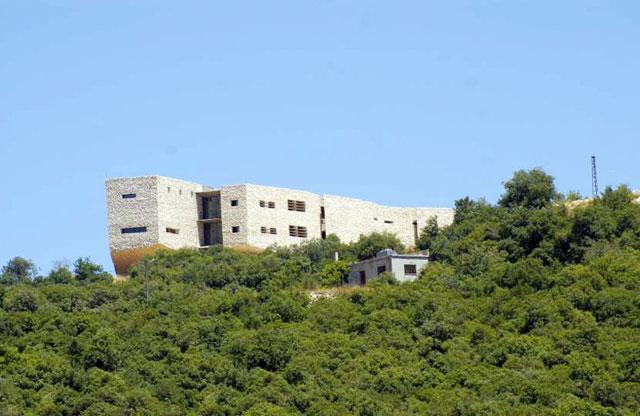You are here
Study monitors presence of stone marten mammal in Dibeen forest
By Hana Namrouqa - Jun 12,2018 - Last updated at Jun 12,2018

The stone marten is one of the species used as an indicator for healthy forest ecosystems (Photo courtesy of RSCN)
AMMAN — The Royal Society for the Conservation of Nature (RSCN) is monitoring the stone marten population in Dibeen Forest Reserve to understand its distribution trend.
The ongoing study, which commenced in 2016 and is scheduled to end this year, seeks to identify the home range of the stone marten and produce a distribution map for the species in Dibbeen Forest Reserve, in addition to identifying its hotspot areas, according to the RSCN.
“Many bio-elements can be considered as indicator species for different habitats. The stone marten is one of these species used as [an] indicator for [a] healthy forest ecosystem,” the society said in an email sent to The Jordan Times.
A radio collar is the method being used to track the stone martens inside and outside the reserve, according to the society, which said that radio collars have been installed on five stone martens in the reserve to measure movements and home ranges.
“The movement distance between released location and the last location where we recorded the collared stone martens was about 4.5 km,” the society said.
Although the animal is categorised as “least concern” under the International Union for the Conservation of Nature’s Red List of Threatened Species, the animal’s population in Jordan is showing a continuous drop due to arbitrary hunting, whether as a hobby or out of local communities’ disregard of the fact that the existence of the mammal is on the line, according to a study in the RSCN’s 2015 annual report.
The stone marten inhabits wooded country in Eurasia. It has grayish-brown fur with a divided white throat bib, according to the Encyclopaedia Britannica.
The Dibbeen Forest Reserve in the northern Governorate of Ajloun is a major sanctuary for the stone marten. Extending over 8.5 sq.m of mountainous topography, it is a safe haven for globally endangered species and the world’s last remaining southeastern forest community of Aleppo pines. It is still threatened by the axes of illegal loggers and fires caused by negligent picnickers.
Studies have indicated that Dibbeen is one of the best remaining examples of the region’s original pine-oak forests, according to the RSCN, which noted that the forest is home to at least 17 threatened species and globally significant biodiversity.
Related Articles
AMMAN — As the Royal Society for the Conservation of Nature (RSCN) celebrated its golden jubilee on Monday, the NGO released its 2015 annual
AMMAN — Densities and populations of most breeding bird species in Ajloun Forest Reserve have “considerably declined” over the past three ye
AMMAN — The Royal Society for the Conservation of Nature (RSCN), rehabilitated 100 dunums of fire-affected land in the Dibeen Forest Reserve

















